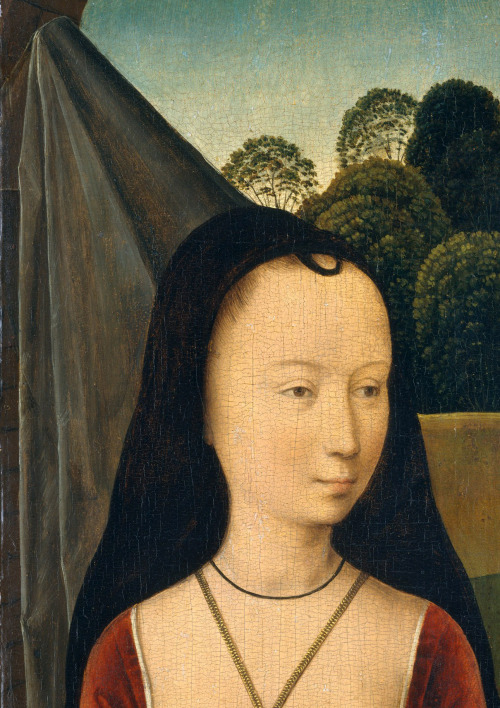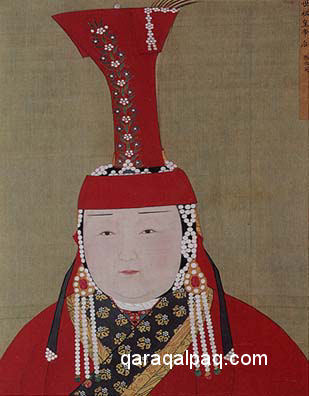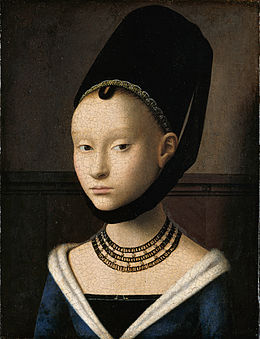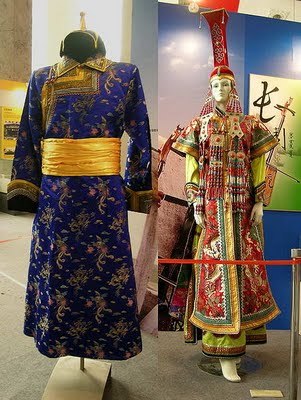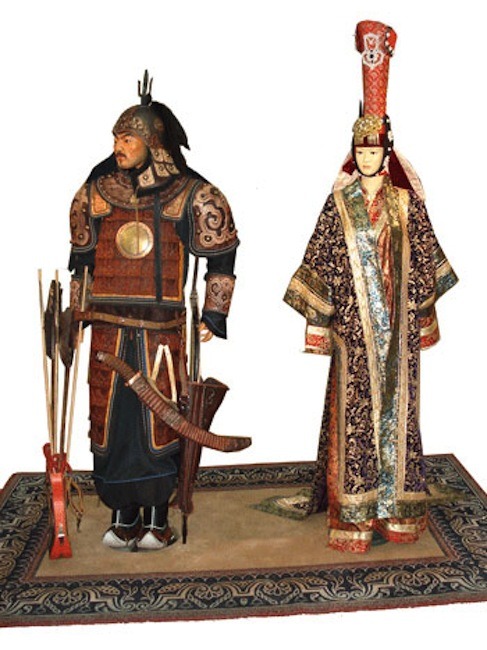edralis:medievalpoc:The Sa’wkele, The Ku-Ku, The Boqta, The Henin: How the Mongol Occupati
edralis: medievalpoc: The Sa’wkele, The Ku-Ku, The Boqta, The Henin: How the Mongol Occupation of Europe Changed European Women’s Fashion Forever One of the most immediately recognizable symbols of the European Middle Ages is the towering, often conical or cylindrical, women’s headdresses popular throughout Europe in the 15th century. To this day, the tall, often veil-decorated “Princess Hat" is immediately known even to American children as a sign of feminine stature, nobility, and elegance. Tiny, cheap versions of this hat are sold to women and little girls by the millions at Renaissance Faires, theme parks, costume shops, and carnivals all over the United States. They look something like this: European cultures have always assimilated and copied the fashions and tastes of other cultures (and vice-versa) and there are many, many examples of such in European art and design throughout the history that are well-attested for and obvious. For example, there are entire styles based on the fascination by “the exotic” in the 19th century and earlier, such as turquerie, chinoiserie and japonism`; there is the Medieval Moorish art in Spain and its influences beyond; the obsession with sub-Saharan African art starting in the 20th century etc. These are just a few – and very formative, indeed – examples of the top of my head. The notion of the hennin being an imitation of Mongolian fashions seems simply far-fetched and unreasonable to me, as I think there is a much better, well documented explanation, that I will try to illustrate below. But first, on the topic of headdresses in general: Large headdresses are extremely impractical. That exactly is the reason why they are very often worn by high classes – in many societies with class division, the richer and nobler the person, the more ridiculous and unpractical his gear becomes. Wearing expensive and over-the-top garments and headdresses is simply the most straightforward way to manifest your power and riches and the fact that you belong to a class of people that does not have to work to feed themselves. Here are just a few examples of various pointy hats worn throughout the ages and all over the world: 5th century BC. Pazyryk (Scythian); Ukok Plateau. Headdress of a Pazyryk (Scythian) lady. (source) : C. 1880 Druze woman wearing tantour: A Hittite relief, supposedly depicting a king. (source): 13th century fresco depicting Pope Innocent III, wearing a papal tiara. source A Japanese ceremonial hat (eboshi). (source) As you can see, tall hats seem to be a thing that developed in many cultures throughout the world many times. There isn’t a single source for tall headdresses, of which every other tall headdress is a descendant. It is not unreasonable to imagine that there existed a tall headdress in Europe that was not related to a tall headdress of a different culture. Fashions always change. Their characteristic features tend to grow gradually more extreme. And when there is nowhere left for them to grow, they transform. Vertical becomes horizontal, low becomes high, elaborate becomes simple. Tallness and pointiness are sliders, so to speak, not switches – variables that are easily exploitable in ever-changing fashions of medieval Europe, as I will try to demonstrate in this post. How what we call the hennin today became the fashionable headdress of a lady of a European court is well-documented in the art of the period, and it is a process that is gradual – spanning through many decades – and regionally specific. Mongol invasion occurred in the 13th century, but it concerned the Slavic territories of Eastern Europe. Mongols never got to France and the Low Countries, where, some two hundred years later, the hennin evolved. I have yet to see an example of hennin from Eastern Europe – the part of Europe which had the best chance to take on some of the fashions of the Mongols, which were, of course, long gone by 15th century. To illustrate the evolution of the headdress, here are several examplea of period art, more or less in chronological order, to support my point: 1410s, Christine de Pisan presenting a book to Isabeau of Bavaria. At this point, the headdress consist of the twin “buns” of hair, probably covered by a net, high at the temples. There is also some unseen kind of supportive structure covered by a curving bejeweled padded roll of fabric – aka bourrelet (which itself probably descended from the rolled-up brim of the hood and is also a feature of the male headdress). 1445-50. Isabella of Portugal, Duchess of Burgundy. The hair is encased in two bejeweled cones, covered with a transparent veil. Compared with the previous example, the headdress is less horizontal and although it does preserve the overall shape, but the padded roll and the hairnet-covered buns seem to be combined into a single structure. As in the previous example, there is a black loop on the forehead. c. 1445-1450. Seven Sacraments Altarpiece by Rogier van der Weyden Woman in blue wears headdress very similar to Isabella’s above and the one in red has many layers of frilled veils in place of the padded roll, but the shape of the headdresses of both women are similar. Bibliothèque de l’Arsenal, Ms-5070 réserve, Decameron - 120r. Flemish. Another combination of padded roll and buns covered by hairnet, this time even more vertical. Bibliothèque royale de Belgique, mss. IV 684 et IV 685 - Jan van Boendale,Brabantsche Yeesten In this example, the padded roll is either very slim, or the veils are pinned straight to the “horns”. c. 1450-1474. Bibl. Mazarine, MS 1559, fol. 196v) 1455-1460. Bibliothèque nationale de France, Français 6465, fol. 338v. The image is small, but you can still see that the veil-covered headdresses are divided in the middle, although their focus is entirely vertical at this stage. The rolls seem to be absent, too. second half of the 15th century. Cambridge, Harvard University, Houghton Library MS Richardson 031 9v 1460c, Bibliothèque nationale autrichienne, codex Vindobonensis 2617. 1440s (?) England. Church of St Giles at Little Malvern Priory - Elizabeth Woodville with daughters Cecily, Ann, Catherine. At this point, the supportive structure is probably joined to form a truncated cone to which the padded roll or the veil is attached. The roll curves, echoing the “horns” of the earlier headdresses. The daughters in the background seem to wear the same cone headdress as their mother, but without the padded roll. 1450-80. Bibliothèque de Genève, Ms. fr. 64 As you can see, the hennin didn’t appear “out of nowhere”. It was just a notable, opulent stage in the transformation of the fashionable medieval headdress and this transformation is very well documented in the art of the era. There is simply no evidence of a Mongol influence in the evolution of this headdress. -- source link
#hennin
